Regular readers will know that Tel Aviv is the place I most like to be. For those of you not familiar with the city, here, in no particular order, are ten of the many reasons that I love to be in Tel Aviv.
Let's begin with the cakes at Cafe Idelson 10 at 117 Dizengoff. I have been coming to this cafe for several years now. It is open every day, has friendly staff and most importantly, the best cakes in Tel Aviv if not Israel - and cakes are my specialist subject. The coffee is good too, but its the cakes that put Idelson firmly in my top ten. My favourite is the pistachio mousse, with elegant light green stripes set into the cream coloured mousse and a couple of maraschino cherries hidden in each slice. I can taste it now. Oh, and the strawberry tarts pictured below are pretty fantastic too!
The Bauhaus Center at 99 Dizengoff is a place of pilgrimage for me. I first came to the Bauhaus Center about 8 years ago and took part in one of their Friday morning guided walks around some of the city's wonderful Bauhaus architectural heritage. As well as organising walks there are regular exhibitions on a range of architectural themes (not just Bauhaus) and it is the absolute best place in Tel Aviv and probably Israel to buy books on the architecture and history of the city, as well as a range of cards, posters, gifts and gadgets to take home to remind you of your visit. I love it.
Walking along the beach from Tel Aviv to Jaffa doesn't cost you anything. I love walking along the sea shore from the Frischman beach, a few minutes away from busy Dizengoff, almost all the way to Jaffa. You get great views of the old port of Jaffa as you approach, and you can walk in the sea for much of the way if you like that sort of thing - and I do. You can pause for a rest on the rocks or on the benches along the promenade and there are plenty of beach bars to have a drink if you need refreshments along the way. Taking it easy and with a few stops to admire the view, take photos or check the sites en route, reasonably fit people can easily reach Jaffa in one hour. Taking this walk as the sun sets is a great experience, watching the colours of the sky change as night falls.
When you arrive in Jaffa there are many things to explore - the flea market, several cafes, historical sites and the artists quarter in the restored old city. The Farkash Gallery in Mazel Dagim Street in the old city makes my top ten due to its fantastic collection of vintage Israeli posters - all originals, but with copies of many available as the gallery own the copyright to many of them - cards, books and original art works by important Israeli artists. I especially like the collection of vintage Israeli advertising from the 1940's and 1950's and have happily parted with a few shekels to add some to my collection! It is a good idea to call before going along as once you've seen the window display you will want to go in.
Seeing a production at the Cameri Theatre is another treat. Tel Aviv has a great theatrical tradition dating back to the first days of the city. It is home to Habima, Israel's national theatre, but also the wonderful Cameri Theatre. The company is internationally acclaimed and has a repertoire that includes drama, comedy and musicals. And you don't have to speak Hebrew as several times each week, the Cameri offers performances with English surtitles. On my most recent visit I saw a stunning production of the musical Cabaret, but have also enjoyed several plays here over the years. Performances start late at the weekend (around 9 or 9.30pm) so you can have dinner first - or buy bagels from the sellers who wait in the plaza for the performance to finish.
Regular readers will know about my passion for jazz and going to a gig at Levontin 7 is the next stop in my Tel Aviv top ten. Levontin 7 is the name (and address) of a small live music club with a cosy ground floor bar and a basement performance space in the more edgy part of Tel Aviv - Florentin. The basement room is sparsely furnished with a simple bar and basic seats but plays host to world class jazz (and other genres) concerts with artists such as Shai Maestro, Yonatan Avishai, Maurice El Medioni and Omri Mor having appeared there in the last few years. The tickets are cheap, the crowd is friendly and its another great night out in TelAviv.
Beit Bialik in Bialik Street (pictured below) is my favourite space in all Israel. Built in 1924 in the Eclectic style as a home for Chaim Nachman Bialik, Israel's national poet, it became the centre of art, literature and creativity in the new city of Tel Aviv. Decorated in vibrant blues, reds and greens as well as with beautiful Bezalel ceramics designed by Zev Raban, the house is a reminder of the great period of creativity that took place in Eretz Israel during the pre-state days. On Bialik's death, his house passed to the City which established it as a museum to the poet. Major restoration was undertaken at the beginning of the current century and the house is open for visitors. As well as the house itself you can see Bialik's letters and personal library, admire the furnishings and some of his art collection which includes work by Reuven Ruben. Bialik Street incidentally is a great street for a number of reasons - it has two more museums (Beit Ruben and the City Museum) as well as the Felicia Blumental Music Centre and a small Bauhaus museum in the next street - Idelson.
The Eretz Israel Museum is a huge complex of galleries in the north of Tel Aviv which is home to a huge collection of art, as well as archaeological, ethnographical and other treasures. It is also home to some of the most interesting temporary exhibitions in Israel, if not the world. The current offer includes Ethiopia, Land of Wonders (poster below); Land of the Bible, an exhibition of photography from the late 19th and early 20th centuries and a further photographic exhibition on the story of the (sadly now demolished) Herzeliya Gymnasium. There is also an excellent shop that sells catalogues, items associated with the temporary displays, books, jewellery and other items. One ticket covers entrance to all of the exhibitions and there are special prices for children, families and retired visitors.
Another free activity is to admire Tel Aviv's amazing architectural heritage. The city is a World Heritage Site due to its huge collection of Bauhaus buildings from the 1930's and 1940's - many designed by German, Austrian and Czech Jews driven out of Europe in the years leading to the Second World War. These beautiful, functional buildings are the reason that Tel Aviv is sometimes referred to as the "White City". Many of the Bauhaus buildings have been restored and the already mentioned Bauhaus Center can direct visitors to the best examples of this style. More recently there has been renewed interest in the pre-ceding style and period - the Eclectic architecture of the 1920's. These buildings have been less well looked after although many are now protected in the way "listed buildings" are in the United Kingdom. I have written recently about the Eclectic style whilst I have also posted about some of my favourite Bauhaus buildings before.
Let's begin with the cakes at Cafe Idelson 10 at 117 Dizengoff. I have been coming to this cafe for several years now. It is open every day, has friendly staff and most importantly, the best cakes in Tel Aviv if not Israel - and cakes are my specialist subject. The coffee is good too, but its the cakes that put Idelson firmly in my top ten. My favourite is the pistachio mousse, with elegant light green stripes set into the cream coloured mousse and a couple of maraschino cherries hidden in each slice. I can taste it now. Oh, and the strawberry tarts pictured below are pretty fantastic too!
The Bauhaus Center at 99 Dizengoff is a place of pilgrimage for me. I first came to the Bauhaus Center about 8 years ago and took part in one of their Friday morning guided walks around some of the city's wonderful Bauhaus architectural heritage. As well as organising walks there are regular exhibitions on a range of architectural themes (not just Bauhaus) and it is the absolute best place in Tel Aviv and probably Israel to buy books on the architecture and history of the city, as well as a range of cards, posters, gifts and gadgets to take home to remind you of your visit. I love it.
Walking along the beach from Tel Aviv to Jaffa doesn't cost you anything. I love walking along the sea shore from the Frischman beach, a few minutes away from busy Dizengoff, almost all the way to Jaffa. You get great views of the old port of Jaffa as you approach, and you can walk in the sea for much of the way if you like that sort of thing - and I do. You can pause for a rest on the rocks or on the benches along the promenade and there are plenty of beach bars to have a drink if you need refreshments along the way. Taking it easy and with a few stops to admire the view, take photos or check the sites en route, reasonably fit people can easily reach Jaffa in one hour. Taking this walk as the sun sets is a great experience, watching the colours of the sky change as night falls.
When you arrive in Jaffa there are many things to explore - the flea market, several cafes, historical sites and the artists quarter in the restored old city. The Farkash Gallery in Mazel Dagim Street in the old city makes my top ten due to its fantastic collection of vintage Israeli posters - all originals, but with copies of many available as the gallery own the copyright to many of them - cards, books and original art works by important Israeli artists. I especially like the collection of vintage Israeli advertising from the 1940's and 1950's and have happily parted with a few shekels to add some to my collection! It is a good idea to call before going along as once you've seen the window display you will want to go in.
Seeing a production at the Cameri Theatre is another treat. Tel Aviv has a great theatrical tradition dating back to the first days of the city. It is home to Habima, Israel's national theatre, but also the wonderful Cameri Theatre. The company is internationally acclaimed and has a repertoire that includes drama, comedy and musicals. And you don't have to speak Hebrew as several times each week, the Cameri offers performances with English surtitles. On my most recent visit I saw a stunning production of the musical Cabaret, but have also enjoyed several plays here over the years. Performances start late at the weekend (around 9 or 9.30pm) so you can have dinner first - or buy bagels from the sellers who wait in the plaza for the performance to finish.
Regular readers will know about my passion for jazz and going to a gig at Levontin 7 is the next stop in my Tel Aviv top ten. Levontin 7 is the name (and address) of a small live music club with a cosy ground floor bar and a basement performance space in the more edgy part of Tel Aviv - Florentin. The basement room is sparsely furnished with a simple bar and basic seats but plays host to world class jazz (and other genres) concerts with artists such as Shai Maestro, Yonatan Avishai, Maurice El Medioni and Omri Mor having appeared there in the last few years. The tickets are cheap, the crowd is friendly and its another great night out in TelAviv.
Beit Bialik in Bialik Street (pictured below) is my favourite space in all Israel. Built in 1924 in the Eclectic style as a home for Chaim Nachman Bialik, Israel's national poet, it became the centre of art, literature and creativity in the new city of Tel Aviv. Decorated in vibrant blues, reds and greens as well as with beautiful Bezalel ceramics designed by Zev Raban, the house is a reminder of the great period of creativity that took place in Eretz Israel during the pre-state days. On Bialik's death, his house passed to the City which established it as a museum to the poet. Major restoration was undertaken at the beginning of the current century and the house is open for visitors. As well as the house itself you can see Bialik's letters and personal library, admire the furnishings and some of his art collection which includes work by Reuven Ruben. Bialik Street incidentally is a great street for a number of reasons - it has two more museums (Beit Ruben and the City Museum) as well as the Felicia Blumental Music Centre and a small Bauhaus museum in the next street - Idelson.
The Eretz Israel Museum is a huge complex of galleries in the north of Tel Aviv which is home to a huge collection of art, as well as archaeological, ethnographical and other treasures. It is also home to some of the most interesting temporary exhibitions in Israel, if not the world. The current offer includes Ethiopia, Land of Wonders (poster below); Land of the Bible, an exhibition of photography from the late 19th and early 20th centuries and a further photographic exhibition on the story of the (sadly now demolished) Herzeliya Gymnasium. There is also an excellent shop that sells catalogues, items associated with the temporary displays, books, jewellery and other items. One ticket covers entrance to all of the exhibitions and there are special prices for children, families and retired visitors.
Another free activity is to admire Tel Aviv's amazing architectural heritage. The city is a World Heritage Site due to its huge collection of Bauhaus buildings from the 1930's and 1940's - many designed by German, Austrian and Czech Jews driven out of Europe in the years leading to the Second World War. These beautiful, functional buildings are the reason that Tel Aviv is sometimes referred to as the "White City". Many of the Bauhaus buildings have been restored and the already mentioned Bauhaus Center can direct visitors to the best examples of this style. More recently there has been renewed interest in the pre-ceding style and period - the Eclectic architecture of the 1920's. These buildings have been less well looked after although many are now protected in the way "listed buildings" are in the United Kingdom. I have written recently about the Eclectic style whilst I have also posted about some of my favourite Bauhaus buildings before.
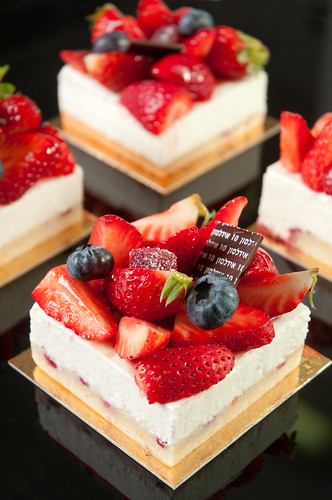
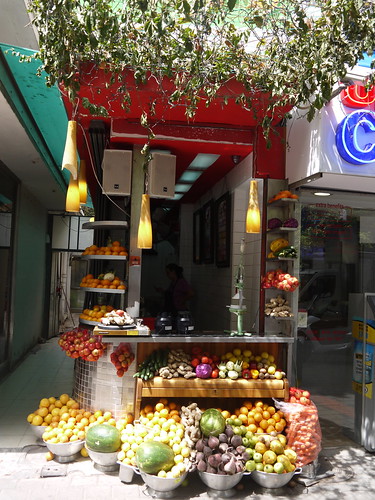
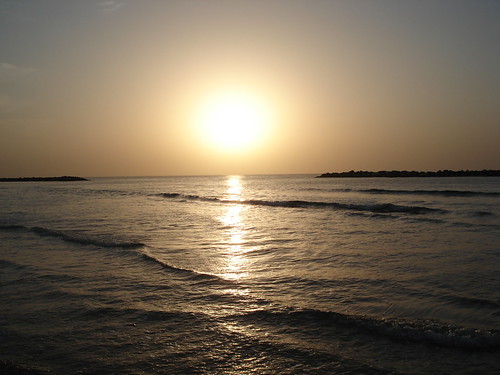
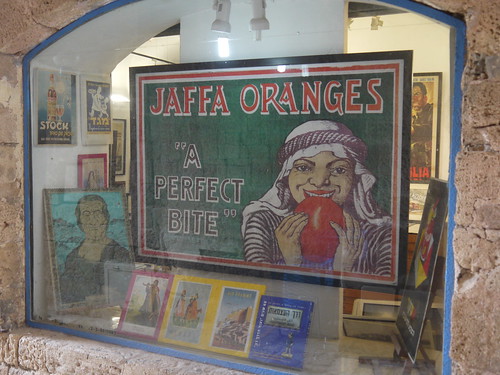


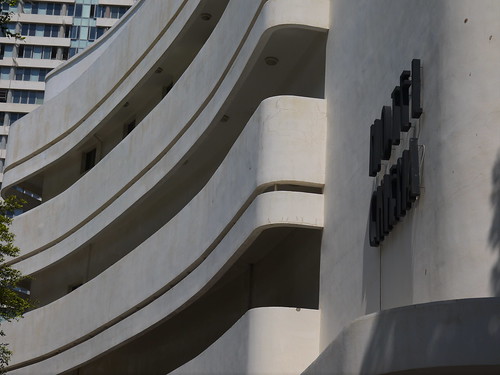
One of the vintage posters in the Farkash Gallery window rang a bell with me. I owned a copy of "Golda Lisa" -- if I recall correctly, I bought it on my first visit to Israel in 1971, when Golda was Prime Minister. I hope I still have it stashed somewhere, and wonder how much it would go for nowadays.
ReplyDeleteFood, Culture, Sea, beaches, Museum, Shopping shows real color of any country. And i am loving this place as there are lot of thing to do and see. Thanks
ReplyDeleteDefinitely whetted my appetite, thanks for sharing! I am looking forward to the Bauhaus stuff and Jaffa in particular. Not sure I will get Mr Lee to Beit Bialik (no more museums, Clarkie!) Will report back... MC
ReplyDeleteGood...I hope you have a great time!
Delete